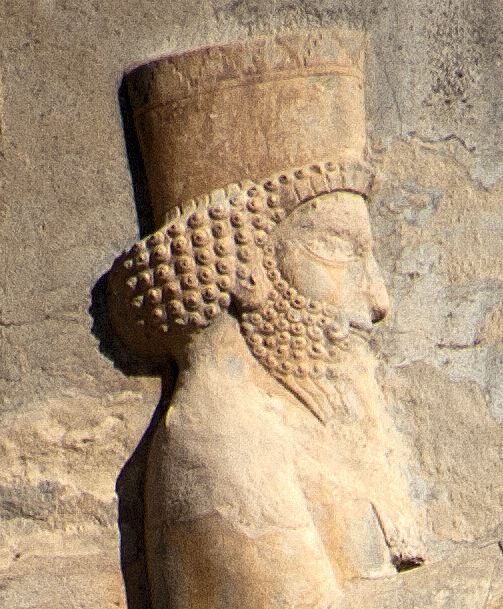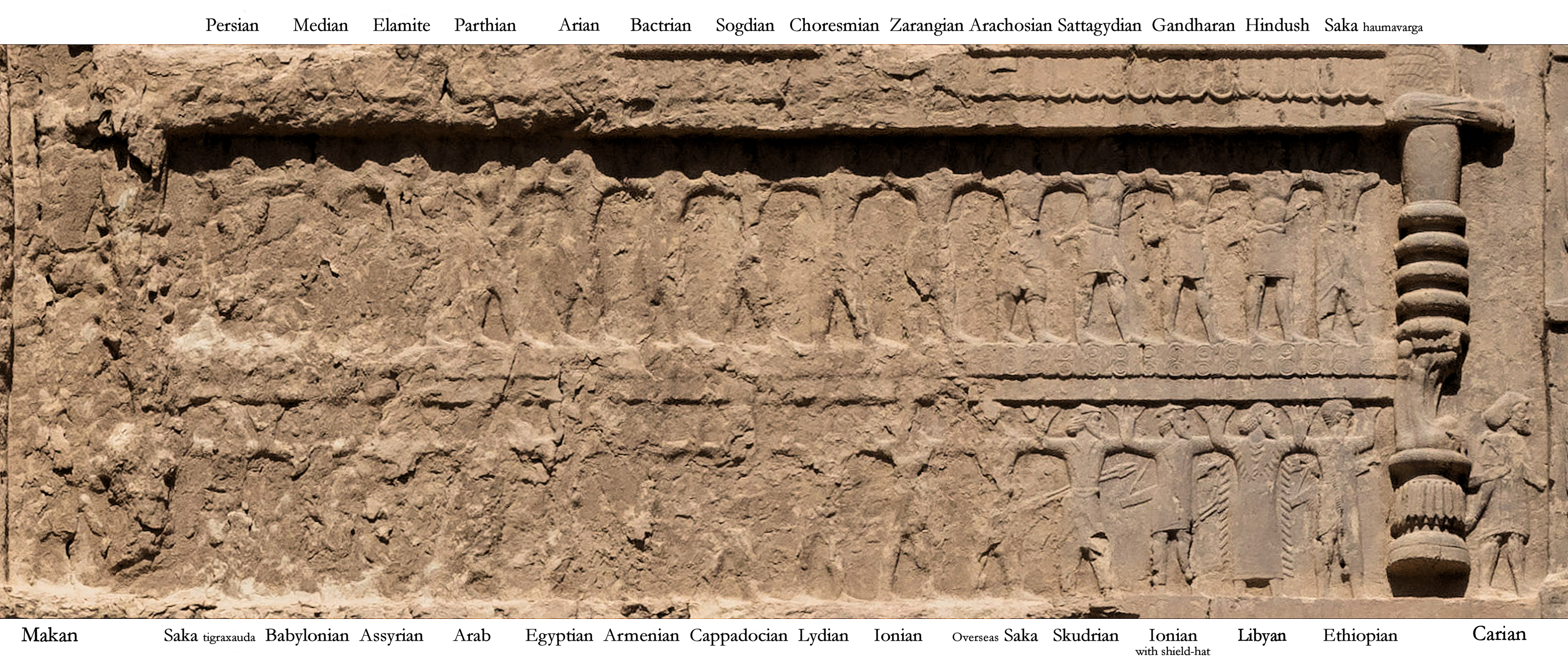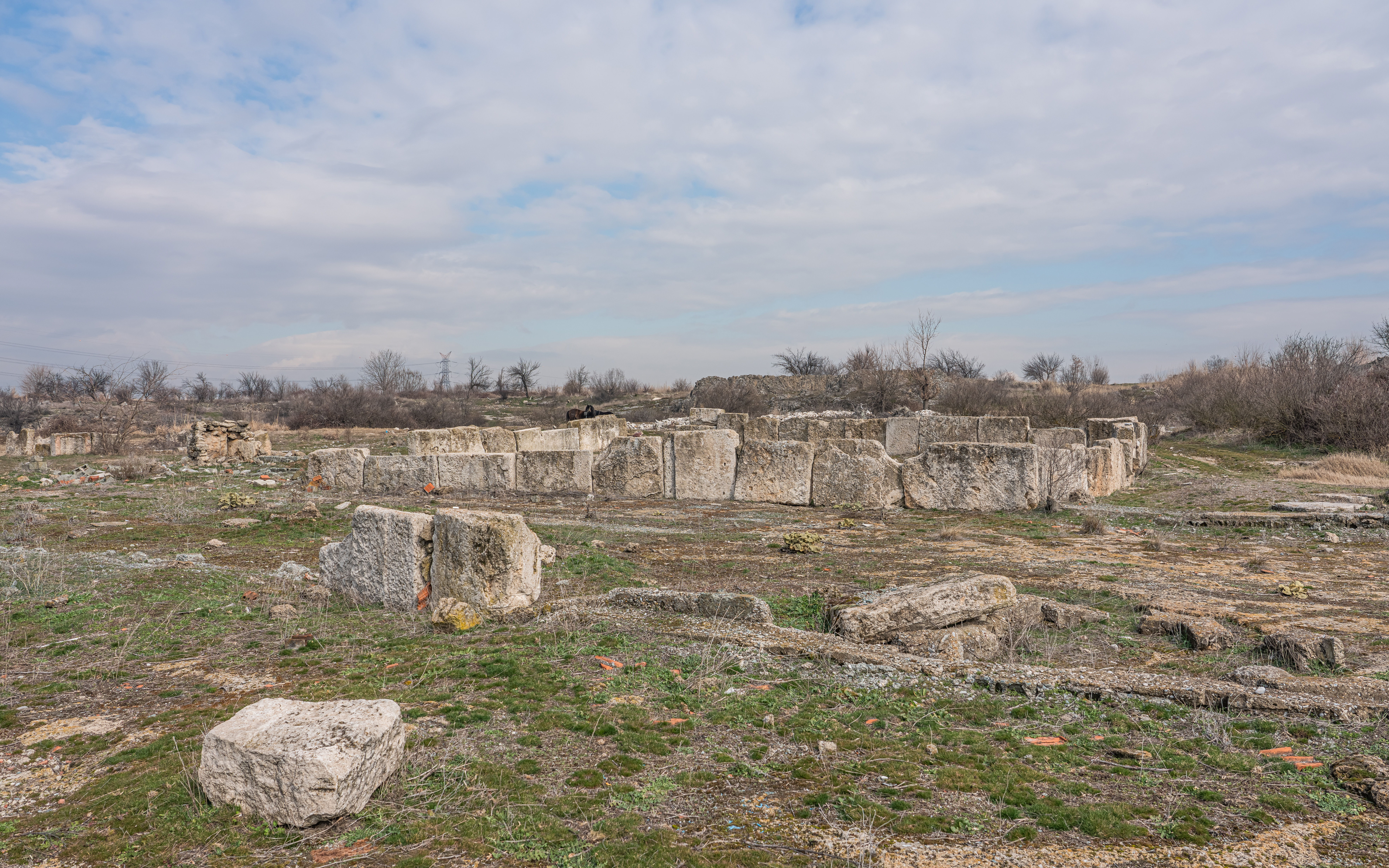|
Tissaphernes
Tissaphernes ( peo, *Ciçafarnāʰ; grc-gre, Τισσαφέρνης; xlc, 𐊋𐊆𐊈𐊈𐊀𐊓𐊕𐊑𐊏𐊀 , ; 445395 BC) was a Persian soldier and statesman, Satrap of Lydia and Ionia. His life is mostly known from the works of Thucydides and Xenophon. According to Ctesias, he was the son of Hidarnes III and therefore the great grandson of Hydarnes, one of the six conspirators who had supported the rise of Darius the Great. Etymology ''Čiçafarnah'' (''čiça'' + ''farnah'') "with shining splendor": ''čiça'' is from the Proto-Indo-European adjective ''(s)koitrós'' 'bright'; ''farnah'' is equivalent to Avestan '' xvarənah'' 'fortune', 'glory', which appears as 'luminous'. ''čiθra'' means nature, specifically the animate nature. ''Čiça-'' is the Old Persian form of the Old Iranian term ''Čiθra-'', which is reflected in the Median form of the name, ''*Čiθrafarnah-'' ( grc, Τετραφέρνης). Family and early life Tissaphernes was born in 445 BC. ... [...More Info...] [...Related Items...] OR: [Wikipedia] [Google] [Baidu] |
Cyrus The Younger
Cyrus the Younger ( peo, 𐎤𐎢𐎽𐎢𐏁 ''Kūruš''; grc-gre, Κῦρος ; died 401 BC) was an Achaemenid prince and general. He ruled as satrap of Lydia and Ionia from 408 to 401 BC. Son of Darius II and Parysatis, he died in 401 BC in battle during a failed attempt to oust his elder brother, Artaxerxes II, from the Persian throne. The history of Cyrus and of the retreat of his Greek mercenaries is told by Xenophon in his ''Anabasis''. Another account, probably from Sophaenetus of Stymphalus, was used by Ephorus. Further information is contained in the excerpts from Artaxerxes II's physician, Ctesias, by Photius; ''Plutarch’s Lives'' of Artaxerxes II and Lysander; and Thucydides' ''History of Peloponnesian War''. These are the only early sources of information on Cyrus the Younger. Biography According to Xenophon, Cyrus the Younger was born after the accession of his father in 424 BC. He had an elder brother, Arsicas (whose name changed to Artaxerxes II when he a ... [...More Info...] [...Related Items...] OR: [Wikipedia] [Google] [Baidu] |
Battle Of Cunaxa
The Battle of Cunaxa was fought in the late summer of 401 BC between the Persian king Artaxerxes II and his brother Cyrus the Younger for control of the Achaemenid throne. The great battle of the revolt of Cyrus took place 70 km north of Babylon, at Cunaxa ( el, Κούναξα), on the left bank of the Euphrates. The main source is Xenophon, a Greek soldier who participated in the fighting. Preparations Cyrus gathered an army of Greek mercenaries, consisting of 10,400 hoplites and 2,500 light infantry and peltasts, under the Spartan general Clearchus, and met Artaxerxes at Cunaxa. He also had a large force of levied troops under his second-in-command Ariaeus. The strength of the Achaemenid army was 40,000 men. When Cyrus learned that his elder brother, the Great King, was approaching with his army, he drew up his army in battle array. He placed the Greek mercenaries on the right, near the river. In addition to this they were supported on their right by some cavalry, 1,000 ... [...More Info...] [...Related Items...] OR: [Wikipedia] [Google] [Baidu] |
Lydia (satrapy)
The Satrapy of Lydia, known as Sparda in Old Persian (Old Persian cuneiform 𐎿𐎱𐎼𐎭, ''Sparda''), was an administrative province ( satrapy) of the Achaemenid Empire, located in the ancient kingdom of Lydia, with Sardis as its capital. Achaemenid Satrapy Tabalus, appointed by Cyrus the Great, was the first satrap; however, his rule did not last long as the Lydians revolted. The insurrection was suppressed by general Mazares and his successor Harpagus. After Cyrus' death, Oroetus was appointed as satrap. Oroetus ruled during the reign of Cambyses, and after the chaotic period that followed the Persian king's death, he conquered the Greek isle of Samos, killing its ruler Polycrates. Due to his growing power, Darius the Great had Bagaeus kill Oroetus. Bagaeus himself may have become satrap for a short period, but the next rulers were Otanes and Darius' younger brother, Artaphernes. Ionian revolt (499 BCE) During the Ionian revolt in 499 BC, Sardis was sacked by the Greek ... [...More Info...] [...Related Items...] OR: [Wikipedia] [Google] [Baidu] |
Darius II
Darius II ( peo, 𐎭𐎠𐎼𐎹𐎺𐎢𐏁 ; grc-gre, Δαρεῖος ), also known by his given name Ochus ( ), was King of Kings of the Achaemenid Empire from 423 BC to 405 or 404 BC. Artaxerxes I, who died in 424 BC, was followed by his son Xerxes II. After a month and half Xerxes II was murdered by his brother Sogdianus. His illegitimate brother, Ochus, satrap of Hyrcania, rebelled against Sogdianus, and after a short fight killed him, and suppressed by treachery the attempt of his own brother Arsites to imitate his example. Ochus adopted the name Darius (Greek sources often call him Darius ''Nothos'', "Bastard"). Neither the names Xerxes II nor Sogdianus occur in the dates of the numerous Babylonian tablets from Nippur; here effectively the reign of Darius II follows immediately after that of Artaxerxes I. Historians know little about Darius II's reign. A rebellion by the Medes in 409 BC is mentioned by Xenophon. It does seem that Darius II was quite dependent on hi ... [...More Info...] [...Related Items...] OR: [Wikipedia] [Google] [Baidu] |
Achaemenid Empire
The Achaemenid Empire or Achaemenian Empire (; peo, 𐎧𐏁𐏂, , ), also called the First Persian Empire, was an ancient Iranian empire founded by Cyrus the Great in 550 BC. Based in Western Asia, it was contemporarily the largest empire in history, spanning a total of from the Balkans and Egypt in the west to Central Asia and the Indus Valley in the east. Around the 7th century BC, the region of Persis in the southwestern portion of the Iranian plateau was settled by the Persians. From Persis, Cyrus rose and defeated the Median Empire as well as Lydia and the Neo-Babylonian Empire, marking the formal establishment of a new imperial polity under the Achaemenid dynasty. In the modern era, the Achaemenid Empire has been recognized for its imposition of a successful model of centralized, bureaucratic administration; its multicultural policy; building complex infrastructure, such as road systems and an organized postal system; the use of official languages across ... [...More Info...] [...Related Items...] OR: [Wikipedia] [Google] [Baidu] |
Pissuthnes
Pissuthnes, also known as Pissouthnes, (Old Persian: ; Ancient Greek: ) was an Achaemenid satrap of Lydia, which included Ionia, circa 440–415 BCE. His capital was Sardis. He was the son of Hystaspes, probably himself the son of Darius I, which shows his Persian origin and his membership of the Achaemenid dynasty. He held the satrapy for over twenty years, and became extremely rich as a consequence. He helped the Samians in the Samian Revolt against Athens, and supported various oligarchical movements against Athens along the coast of Asia Minor. He revolted against the Persian king Darius II Nothus between 420-415 BCE. He recruited Greek mercenaries under the generalship of Lycon for his campaigns. Tissaphernes, who was sent by the King to suppress the revolt of Pissuthnes, managed to bribe Lycon, and then brought Pissuthnes to Susa where he was executed. Tissaphernes became his successor as Satrap of Lydia. Pissuthnes had a natural son named Amorges Amorges (Old Irani ... [...More Info...] [...Related Items...] OR: [Wikipedia] [Google] [Baidu] |
Achaemenid Persia
The Achaemenid Empire or Achaemenian Empire (; peo, 𐎧𐏁𐏂, , ), also called the First Persian Empire, was an ancient Iranian empire founded by Cyrus the Great in 550 BC. Based in Western Asia, it was contemporarily the largest empire in history, spanning a total of from the Balkans and Egypt in the west to Central Asia and the Indus Valley in the east. Around the 7th century BC, the region of Persis in the southwestern portion of the Iranian plateau was settled by the Persians. From Persis, Cyrus rose and defeated the Median Empire as well as Lydia and the Neo-Babylonian Empire, marking the formal establishment of a new imperial polity under the Achaemenid dynasty. In the modern era, the Achaemenid Empire has been recognized for its imposition of a successful model of centralized, bureaucratic administration; its multicultural policy; building complex infrastructure, such as road systems and an organized postal system; the use of official languages across its ... [...More Info...] [...Related Items...] OR: [Wikipedia] [Google] [Baidu] |
Colossae
Colossae (; grc-gre, Κολοσσαί) was an ancient city of Phrygia in Asia Minor, and one of the most celebrated cities of southern Anatolia (modern Turkey). The Epistle to the Colossians, an early Christian text which identifies its author as Paul the Apostle, is addressed to the church in Colossae. A significant city from the 5th century BC onwards, it had dwindled in importance by the time of Paul, but was notable for the existence of its local angel cult. It was part of the Roman – and then Byzantine – province of Phrygia Pacatiana, before being destroyed in 1192/3 and its population relocating to nearby Chonae (Chonai, modern-day Honaz). Location and geography Colossae was located in Phrygia, in Asia Minor. It was located southeast of Laodicea on the road through the Lycus Valley near the Lycus River at the foot of Mt. Cadmus, the highest mountain in Turkey's western Aegean Region, and between the cities Sardeis and Celaenae, and southeast of the ancient city ... [...More Info...] [...Related Items...] OR: [Wikipedia] [Google] [Baidu] |
Tiribazus
Tiribazus, Tiribazos or Teribazus (Old Iranian: ''Tīrībāzu'') (c.440 BC-370 BC) was an Achaemenid satrap of Western Armenia and later satrap of Lydia in western Anatolia. Satrap of Western Armenia He was highly regarded by the Persian King Artaxerxes II, and when he was present, so Xenophon tells us, no one else had the honour of helping the sovereign to mount his horse. Until 395 BC, Tiribazus served as the hyparch of Western Armenia. Satrap of Lydia He succeeded Tithraustes as satrap of Western Asia (Sardis). He was holding this office when, in 393 BC, Antalcidas was sent to negotiate, through him, a peace for Sparta with the Persian king. In 392 BC, while the Corinthian War was being contested amongst the Greek states, Tiribazus received envoys from the major belligerents of that war, and held a conference in which a proposal for ending the war was discussed. That discussion failed, but Tiribazus, convinced that Athens was becoming a threat to Persia in the Aegean, secr ... [...More Info...] [...Related Items...] OR: [Wikipedia] [Google] [Baidu] |
Ionia
Ionia () was an ancient region on the western coast of Anatolia, to the south of present-day Izmir. It consisted of the northernmost territories of the Ionian League of Greek settlements. Never a unified state, it was named after the Ionian tribe who had settled in the region before the Archaic period. Ionia proper comprised a narrow coastal strip from Phocaea in the north near the mouth of the river Hermus (now the Gediz), to Miletus in the south near the mouth of the river Maeander, and included the islands of Chios and Samos. It was bounded by Aeolia to the north, Lydia to the east and Caria to the south. The cities within the region figured large in the strife between the Persian Empire and the Greeks. Ionian cities were identified by mythic traditions of kinship and by their use of the Ionic dialect, but there was a core group of twelve Ionian cities who formed the Ionian League and had a shared sanctuary and festival at Panionion. These twelve cities were (from ... [...More Info...] [...Related Items...] OR: [Wikipedia] [Google] [Baidu] |
Xerxes I
Xerxes I ( peo, 𐎧𐏁𐎹𐎠𐎼𐏁𐎠 ; grc-gre, Ξέρξης ; – August 465 BC), commonly known as Xerxes the Great, was the fourth King of Kings of the Achaemenid Empire, ruling from 486 to 465 BC. He was the son and successor of Darius the Great () and his mother was Atossa, a daughter of Cyrus the Great (), the founder of the Achaemenid empire. Like his father, he ruled the empire at its territorial peak. He ruled from 486 BC until his assassination in 465 BC at the hands of Artabanus, the commander of the royal bodyguard. Xerxes I is notable in Western history for his invasion of Greece in 480 BC. His forces temporarily overran mainland Greece north of the Isthmus of Corinth until losses at Salamis and Plataea a year later reversed these gains and ended the second invasion decisively. However, Xerxes successfully crushed revolts in Egypt and Babylon. Xerxes also oversaw the completion of various construction projects at Susa and Persepolis. ... [...More Info...] [...Related Items...] OR: [Wikipedia] [Google] [Baidu] |
Persian Immortals
Immortals ( grc, Ἀθάνατοι, Athánatoi) or Persian Immortals was the name given by Herodotus to an elite heavy infantry unit of 10,000 soldiers in the army of the Achaemenid Empire. The unit served in a dual capacity through its role as imperial guard alongside its contribution to the ranks of the Persian Empire's standing army. While it primarily consisted of Persians, the Immortals force also included Medes and Elamites. Essential questions regarding the historic unit remain unanswered because authoritative sources are missing. Herodotus' account Herodotus describes the Immortals as being heavy infantry led by Hydarnes the Younger; it provided the professional corps of the Persian armies and was kept constantly at a strength of exactly 10,000 men. He stated that the unit's name stemmed from the custom that every killed, seriously wounded, or sick member was immediately replaced with a new one, maintaining the corps as a cohesive entity with a constant strength. The ... [...More Info...] [...Related Items...] OR: [Wikipedia] [Google] [Baidu] |








